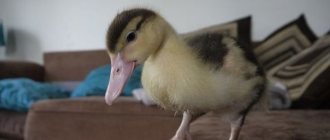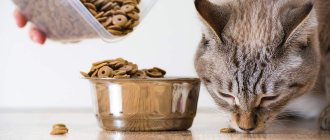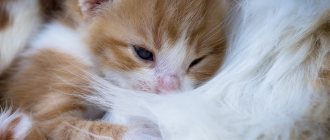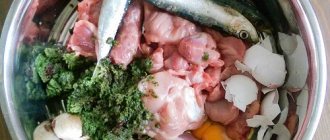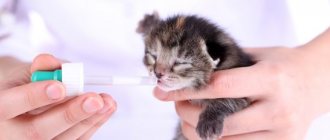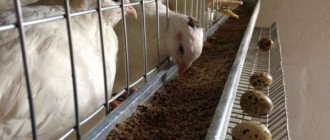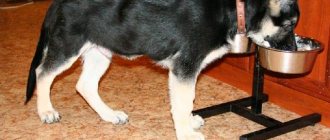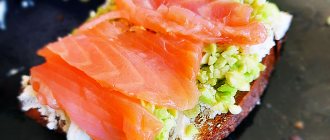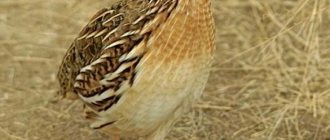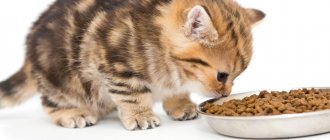Industrial type of feed
Beginner poultry farmers who are afraid to feed their pets homemade mixtures are especially drawn to purchased feed. Experienced farmers use both nutrition options:
- buy industrial feed;
- Prepare feed mixtures yourself.
Industrial feed is sold in packages. See the diagram for feeding quails with various feeds:
We will also consider each type of complete feed for quails separately.
For chicks
Starter feed is needed for hatched chicks. Young animals are fed with them until 21 days. Preparing starter food is a difficult task, it is better to buy it. There will be few expenses - the chicks eat little, but there will be a guarantee that they will receive a complete diet. Even a slight deviation from the composition can negatively affect the development of the bird. The following foods are sold for quail chicks:
- PK 5-41 is a complete starter feed. Cereal 3 x 3 mm. They are fed from the first day of life until the 4th week. Forms cellular and humoral immunity, accelerates weight gain. Consists of corn, wheat, soybean cake, sunflower meal, fish meal, feed yeast, limestone, feed phosphates and vegetable oil. Also contains a vitamin and mineral mixture, antioxidant, amino acids, enzymes and an antibacterial complex.
PK 6-6 – feed for replacement young animals. Give at 4-6 weeks. It differs from the starter feed in the presence of corn gluten, wheat bran, vegetable fat, soda and a mold inhibitor. The remaining ingredients repeat the composition of the starter feed. PC 3-8 – complete granulated food made from natural products. Give at 5-6 weeks. The composition is similar to the previous one, but the components are selected in different proportions. Feed PK 3-8 is intended for young animals raised for eggs, therefore it contains a higher content of calcium, sodium, and chlorine.
When feeding young animals, any food is soaked in water.
For an adult bird
Growth feed is given to quails from 21 days. Feeding is carried out until the age of 1.5 months. When choosing feed, take into account the direction of breeding - for eggs or for meat:
- PC 1-24 – given to laying hens during the productive period. Feed in the form of grains 3 x 3 mm. Consists of wheat, soybean oil, soybean and sunflower meal. It also contains phytase, multi-enzyme and vitamin-mineral complexes, and an antibacterial drug.
- DK 52-4 – grits 2-3 mm. Complete feed for laying hens, given from the 7th week. Consists of wheat, bran, corn, meal, salt, fish meal and fish oil. The composition also contains Bacell enzyme, soda, lime flour, and other components.
- PK-1P – recommended for meat breeds of quail. Can be given from 22 days. High-calorie, balanced and easily digestible food. It is recommended to mix with herbs. Contains grain, grain processing products, meal, corn, proteins and vegetable fats. Enriched with premix.
DK-52 – compound feed for laying hens. Give from the 7th week. Produced in the form of grains. Improves poultry productivity and strengthens the shell. Balanced feed providing 85-90% productivity. DK-53 – for birds intended for fattening for meat. Granulated complete feed for fattening from the 7th week. The composition is standard - grains, bran, meal, etc. A complete set of vitamins, antioxidants and bioactive substances.
Feeding chickens
Boiled eggs and cottage cheese replace bugs and worms in the diet of small quails. Quail or chicken eggs are hard-boiled and crushed without removing the shell. The food is scattered over the feeders, the nimble minke whales quickly understand where the food is and find the food source themselves. To prevent the wet egg from turning into a sticky single mass, it is lightly sprinkled with fine corn grits.
Cottage cheese - food for chickens
From day 2, the chicks are given cottage cheese. It is better if it is dried and separated from the whey as much as possible.
Important! Eggs and cottage cheese, being in a brooder at high temperatures (at least 30°C), quickly deteriorate. To avoid stomach upset in babies, food is given in small portions 3 to 5 times a day.
Before each feeding, the feeders should be washed to remove any remaining old food.
It is much easier to use ready-made feed for quails. Starter food is suitable for babies from the first day of life. The proportion of protein in it should be at least 26 - 28%. It is enough to pour dry feed granules into feeders once a day, which is very convenient if you are raising a large number of livestock.
In the absence of feed, the quail are fed a mixture of corn and wheat grits in a ratio of 3:1. Be sure to add cottage cheese or boiled meat, 2 - 4 g per individual. A premix is added to the grain mixture according to the instructions or a complex of vitamins is added to drinking water.
Is it possible to give small quails grass?
From the 3rd day of life, chicks should be offered finely chopped greens. Plants chosen are juicy and nutritious: quinoa, wood lice, clover, alfalfa, dandelion. From the 7th day, green onions are added to the menu, which is a good antiseptic and strengthens the bird’s immunity.
Alfalfa for quail
In winter, the birds are given grass meal. It can be purchased at feed stores (it is often sold in granules) or you can prepare it yourself. To do this, dried grass is crushed to dust and mixed with food.
Vitamins in quail nutrition
In pet stores or on the market you can purchase special vitamin feeds for quails or laying hens, which contain various vitamins. In this case, you will need to feed the birds according to the instructions. If you can’t buy them, then you can buy ordinary multivitamins at the pharmacy, which are crushed and added to the quail’s feed.
In any case, from time to time the bird additionally needs vitamin D2 - 3000 IU per quail per day or D3 - no more than 1000 IU per day.
Vitamins can also be supplied with fresh herbs, which quail really like. They will be happy with finely chopped grass in the form of chickweed or wood lice, sprouted oats and grated ripe apple or carrots. However, it is not recommended to overfeed laying hens with fruits and grass. They may stop laying eggs or will produce very small eggs.
It is necessary to ensure that unpeeled oats do not get into the quail’s food. This is especially true for birds living in the same house with any ornamental birds. Unpeeled oats in quails can cause problems with the gastrointestinal tract, which can kill the birds.
Feeding laying hens
Feeding hen quails must be balanced so that they lay eggs normally. Only in this case can you get enough eggs. It is allowed to feed laying hens with compound feed or self-prepared grain mixture
When preparing your diet, it is very important to pay attention to the protein content. The norm for laying hens is 25% of the diet. If you give too much protein, quails begin to lay eggs with two yolks
They are quite suitable for food, but it is impossible to breed chicks from such material
If you give too much protein, quails begin to lay eggs with two yolks. They are quite suitable for food, but it is impossible to breed chicks from such material.
When feed prepared for laying quails, for example, PK-1, is used, additional proteins are added to it. Cottage cheese, minced fish, soybean meal, meat and bone meal, and legumes are also added. There should be 2 g of additional protein per head. When preparing mixtures yourself, add 12 g of protein ingredients per head.
Laying hens should not be overfed with grain. Obese birds lose egg production. One quail should eat 25-30 g of food per day. Annual consumption is about 9 kg of feed or 10-11 kg of grain mixtures. Feeding quail laying hens in the country at home must include vitamins and minerals. Vitamin E is especially important for them, as it affects fertility. Calcium and vitamin D are also needed to strengthen the eggshell.
https://youtube.com/watch?v=KDEKklHP75k
The stage of feeding quails is extremely important - with the right choice of food, the bird will be healthy, grow quickly and give the farmer a lot of eggs and meat. The main task is to comply with daily feeding norms and rules, as well as enrich the food with useful substances and vitamins.
What to give
At first, chickens should be kept separately from adult birds, otherwise they may remain hungry. During breaks between meals, feeders must be emptied of food residues. If the feeding process is carried out directly in the cage, the bottom must be cleaned. It is better to use remote feeders.
The rules are:
- The first food for chickens is eggs. They need to be hard-boiled and then chopped (with the shell). We need to give it together.
- The next day, the diet is enriched with cottage cheese. It's better if it's homemade. You cannot add salt or sweeten it.
- After another day, it’s good to start adding greens. Before serving, it should be thoroughly washed and cut.
- Subsequently, the egg norm should be reduced, and the cottage cheese norm should be increased.
- From the second week of life, the chickens are carefully transferred to regular food.
How much feed do you need?
Eggs should be started with 3 g per chicken. Cottage cheese - from 2 g. Greens - starting from 3 g and up to 10 g by the end of the week. Grain (from the fifth day) - from 5 g. Wheat bran (from the same time) - from 4 g.
What to feed laying quails at home
Quails that will be used as laying hens can be selected from the rest of the young after 4 weeks of life. For this purpose, the healthiest are selected. Careful adherence to the diet here is determined by the fact that it is impossible to overfeed such birds. If they go overweight, they won’t get eggs.
What do they eat
At this stage, feed alone, even enriched with additives, will not be enough. The diet needs to be varied, since the choice is great. Cottage cheese, grains, herbs, fish, soybeans, and meat products are suitable. Eggshells must be present. If there is a lack of it, laying hens may begin to peck at their own eggs.
Quail diet and feeding standards
A laying hen needs no more than 30 g of food per day. In addition to already known products, you can use oats, millet, barley, and corn. Suitable additives include chalk, salt, and shell rock. To improve digestion, you need to give fine gravel. Boiled potatoes and beets have also proven themselves.
With your own hands, you can prepare a healthy mixture from the following components: crushed wheat (up to 1 kg), chopped corn (0.4 kg), barley (0.1 kg), bone meal (up to 5 g), sunflower oil (teaspoon).
Seasonal feeding
Depending on the time of year, the diet of laying hens (as well as other quails) will differ. This is objective - in winter birds need more vitamins and useful supplements
This is especially important for laying hens. Increased egg production will directly depend on the quality of their nutrition
Summer period
Summer itself determines some additions to the usual diet. Usually these are fresh vegetables and fruits. It is better to give apples without peel. Greens and oil cake will do. In summer, the volume of boiled meat and fish increases (they need to be chopped before serving).
Drinking regime
An important element for the drinking regime of any animal is the origin of water. If the water comes from a river, then it must first be boiled and allowed to cool. When using water from a well, it should be heated, otherwise the birds may catch a cold.
It is worth changing the birds' water once or several times a day, depending on its residue and contamination.
There is no need to boil tap water. She just needs to let it sit for the chlorine to disappear. If there are doubts about the quality of this water, you should additionally pass it through a filter.
Once a week, it is necessary to pour a weak solution of potassium permanganate into the drinking bowls, alternating it with a selenium solution. For prevention, vitamin C is added to the water once every 10 days. 1-2 tablets of ascorbic acid per 1 liter are enough. But it is better to add B vitamins separately. Otherwise, useful substances will destroy each other during a chemical reaction in water.
What to feed young quails
In addition to the above methods of raising young animals, you can also use incubators to mature hatched chicks. To do this, you can put a special box instead of trays, but you can also use trays.
Hatched quails can consume food on their own from the very first hours. Since young animals grow and develop very quickly, chicks need food containing high levels of protein, minerals and vitamins.
The feeding diet for quails aged from 1 to 10 days includes the following products:
- Finely chopped boiled egg
- Cottage cheese
- Curdled milk
- Chopped greens
- Compound feed for birds
An example of a diet for quails of different ages is shown in Figure 5. Young animals can also be fed with the following improvised mixture: egg yolks, bran, grated carrots and chopped fresh herbs. The feed-based mixture must be crushed. At the age of 4 days, the quails are fed wheat cereal, hard-boiled eggs, greens, millet, and small mealworms. In addition, there is another option for the diet of feeding young animals: millet, boiled fish, finely chopped greens (nettle, dandelion and other herbs), finely ground wheat flour, as well as crushed quail eggs with shells (chicken eggs can be used, but without shells). The prepared mash is placed in feeders (tray tray or pubic feeder).
Upon reaching 1 month of age, excess males are separated from the general herd, placed in a darkened room for 4-5 weeks and begin to be fattened for slaughter. Feeding is very intensive (dry-based feed). For adult quails, the temperature in the room should be maintained within 18-20 degrees, with a lighting period of 16-17 hours. During sex division, the most developed males are selected for breeding purposes.
Feeding rate
Quails are transplanted into cages for adult birds when they reach the age of 3-4 weeks, since at 3 weeks of age young animals are not so demanding in maintaining temperature conditions. In addition, quail can be divided by sex, and the size of the young allows them to be kept in cages for adult birds.
When raising young animals, you need to monitor the freshness and cleanliness of the feed. Water and food in drinking bowls should always be fresh. The water must be changed daily and the drinking bowls must be washed more often, and the cages must be cleaned of dirt (litter) daily.
Figure 5. Approximate diet for young quail
If all the necessary conditions for raising quail are met, the survival of the young during the first four weeks of life is 90-95%, and in the second four-week period it can be 98-99%.
The death of quails most often occurs within 3-6 days after hatching. The safety of young animals may be impaired due to the following factors:
- Unsatisfactory or excessive amount of vitamins in the daily diet;
- Cloaca blockage;
- Diseases caused by enterobacteria – pullorosis.
To prevent mortality among young animals, starting from the first day after hatching, it is recommended to give a weak solution of potassium permanganate, finely chopped onion feathers, hard-boiled quail eggs, grated carrots, fish oil, cottage cheese, chopped nettles.
Starting from the third day, multivitamins, boiled lean fish, and fodder biomycin should be added to the diet, and after 24 hours, chloramphenicol-succinate should be added.
Paper is used as bedding for chicks during the first few days, and then dry river sand.
When a cloaca occurs, droppings are removed using tweezers, the feathers around the cloaca are washed with water and treated with brilliant green or vegetable oil.
To treat pullorosis, it is good to use Holofan (a feed antibiotic) and give quail ash-sand baths (ash-to-sand ratio 3:1). The author of the video will tell you even more useful information about how you can raise healthy and productive young quails.
https://youtube.com/watch?v=dB0Ym29t9ak
Feeding mode
Feeding young quails directly depends on the age of the birds. If in the first week one individual eats about 4 grams of food, then by the age of one month this figure grows to 25-30 grams.
After a few days, you can gradually accustom the chicks to feeders by pouring food into containers with small sides (for example, into lids from large plastic bottles). In the future, regular feeders for adults are used. In addition, it is necessary to place containers with clean drinking water in the cage. For this purpose, you can use nipple drinkers, special designs for quail, or jars installed in small saucers upside down.
What is the best way to feed laying quails?
We recommend reading our other articles
- Pepper Bogatyr
- Summer pear varieties
- Kalmyk breed of cows
- Powdery mildew on gooseberries
In order for quails to lay eggs well, it is necessary to properly regulate their diet. The egg production of a laying hen is primarily affected by amino acids and proteins (at least 25% of the total feed mass). Therefore, fish or meat and bone meal and cottage cheese should be present in the poultry’s diet. Additives in the form of corn, soybean, cotton, and rapeseed oil also have a positive effect on egg production.
Important! In order for quails to produce a lot of high-quality eggs, gravel, crushed shells, and food chalk must be added to their food.
How many times should laying hens be fed per day? Laying hens are fed 3 times a day with equal intervals between feedings. On average, each female eats 30 g of food per day. If you give more food, obesity will appear and egg production will sharply decrease. If the food changes for one reason or another, the transition to it should be gradual. To do this, the old and new food are mixed, at first the new type of food is given at least, but every day the weight of the old food is reduced, and the amount of the new food is increased. This way the bird quickly gets used to the new diet and does not experience stress because of it.
What to feed quails, what do the eggs produce? Below are two types of food for quails to lay eggs well. They are as healthy as possible, simple and at the same time nutritious.
In order for quails to lay eggs well, gravel, crushed shells, and food chalk must be added to their food.
Ingredients:
- corn – 100 g;
- wheat – 100 g;
- peas – 15 g;
- sunflower cake – 45 g;
- soybean meal – 45 g;
- yeast – 22.5 g;
- meat and bone meal – 22.5 g;
- sunflower oil – 5 g.
Also, a vitamin-mineral premix of 10% concentration in the amount of 40 g is added to this mixture. After crushing the grain, peas, corn, you need to mix everything and use it to feed the poultry.
Ingredients:
- corn – 100 g;
- wheat – 95 g;
- millet – 75 g;
- fish and meat and bone meal – 60 g each;
- yeast – 30 g;
- sunflower cake – 25 g;
- powdered milk – 20 g;
- crushed shell – 10 g.
This recipe has a positive effect on the health of laying hens, the quality of the shell and the number of eggs. To prevent large grains from getting stuck in the bird’s throat, it is advisable to grind them well, and if in doubt, soak them for a day.
Plant components strengthen immunity and have a positive effect on productivity
The most recommended feeds for laying hens are “Gazda” and “Force of Nature”. They contain many antioxidants, vitamins, and minerals.
Video “Broilers can also lay eggs well”
This video shows that quail broilers can start laying eggs early.
The transition to feeding according to the new recipe must be carried out within 4 days. On the first day, quails are given 50% of the old food and 50% of the new one. Thus, gradually reducing old feeds, replace them with new ones. The fattening period lasts up to a month. In the final seven days, the usual weight of feed (approximately 30 g) is increased by approximately 8%. If the recipe is compiled correctly, then at the time of slaughter the quail should weigh 160 grams. and more. There should be a good layer of subcutaneous fat on the chest.
Important! During this period, the bird must be given chopped carrots so that the flesh takes on a better appearance.
During this period, the following products should be excluded from the menu. These are fish, onions, garlic, pine needles. That is, the listed products can significantly worsen the color, taste and smell of meat.
Varieties of food for quails
If you have a desire to have quails and want to ensure the proper development of the bird, you need to pay special attention to feeding. Make sure your diet is balanced
It must contain grains, vitamins and minerals.
Cereals and cereal crops
In order for the quails you keep at home to receive the necessary nutrients, the food should consist of 50% grains and cereals. If they are present in the feed mixture in excess of the norm, this can cause obesity in the bird. As a result, quails will not lay eggs. For the good development of this bird, the following grain crops must be included in the diet:
- corn. Due to its high content of starch and carbohydrates, it is a good source of energy for poultry. The amount of amino acids in it is small. To eliminate their deficiency, experts recommend adding fish or meat and bone meal to this cereal;
- oats are also good for quail. It contains B vitamins. Before adding it to the feeder, you should sift the cereal;
- wheat is a necessary component for the normal development of quails. It provides increased productivity in laying hens. It should definitely be included in the diet in order for quails to delight you with high egg production rates.
Other products
Along with grains and cereal crops, legume products are also of great benefit for the growth and development of quails. Their main value lies in the large amount of amino acids, proteins and fats contained in these crops. Along with them, rice should also be included in the diet. Its positive effect is to increase the egg production of quails. However, it should be remembered that compared to other cereals, rice is more expensive, so it should be given to poultry less often.
Quite often, farmers use meal and cake to feed birds. They use these components to make mash. By squeezing the oils from soybeans and sunflowers, both substances are obtained. They are incredibly valuable because they contain not only vitamins, but also amino acids that will be beneficial for chickens.
Vitamins
Various foods may contain vitamins for quail. However, it is necessary to use them in moderation when feeding poultry. At the same time, you should make sure that the food you put in the feeder is fresh. Experts recommend feeding quails the following vegetables:
- carrot. It contains carotene, as well as a set of B vitamins;
- beet. This vegetable is rich in sugar, which is necessary for the normal development of young and adult individuals;
- cabbage. It contains large amounts of vitamins A, B and C. Adding it to the feeder helps improve the quality of the shell, while reducing the likelihood of eggs pecking;
- potato. It contains starch in large quantities, as well as B vitamins. However, it should be given only in prepared form.
In addition, experts recommend including greens - nettles and grass - in the quail menu. Before putting the green mass into the feeder, you should chop it thoroughly.
Minerals
For normal development of quails, it is necessary to include minerals in their diet. Thanks to them, birds improve digestion and also improve the quality of eggshells. Experts recommend adding feed chalk, which contains a large amount of calcium, to the diet. Table salt, which is a rich source of sodium, will also benefit birds. As a temporary supplement when breeding quails, you can use eggshells, which should be given in crushed form.
River shells also contain large amounts of calcium. They can be purchased at a pet store or collected yourself on the shore. Before using them as a top dressing, the shells should also be ground thoroughly.
What is the best way to feed laying quails?
The amount of protein in feed for laying hens should be about 26%. This requirement is mandatory to improve the quality of eggs and increase egg production. Do not forget to add crushed eggshells to the food to saturate the body with calcium. One head needs 25-30 grams of feed per day.
Grain is a must in the diet; if it is absent, the bird may simply stop laying eggs.
Quail - laying hen
Quail eggs
Tips to follow to increase egg production:
Every day the bird should eat three times at such an interval that it has time to develop a good appetite before the next feeding. Remains of food after each meal must be removed from the feeder - this way you can achieve compliance with the optimal regime and not deviate from it. Each laying hen should consume at least 30 grams of feed. The volume of food should be appropriate for the age of the hen; overfeeding is unacceptable, as this will lead to obesity, which negatively affects the quantity and quality of eggs produced. The diet of laying hens should contain at least 25% of proteins, which are most responsible for egg production and the quality of laid eggs. Therefore, it is necessary to add bread or cottage cheese to the food - at the rate of 2 grams for each individual. Under no circumstances should you switch too abruptly from one nutritional composition to another.
If such a need arises, this must be done very smoothly and gradually, mixing the previous and new feed compositions in equal proportions.
An important condition is the freshness of the food, regardless of its type.
Increasing egg production in quails
The addition of fresh and high-quality vegetable oils of cotton, soybean, corn, sunflower and rapeseed has a beneficial effect on the egg production of quails - these fat additives are rich in unsaturated fatty acids, phospholipids and unsaponified lipids - substances indispensable for the development of quails, which not only improve the egg production of young animals, but also accelerate the process of its ripening.
Adding vegetable oils to the diet will have a qualitative effect on the egg production of quails
Especially for laying hens, it is recommended to prepare homemade food with the addition of a vitamin-mineral premix of ten percent concentration in the amount of 80 grams. The remaining ingredients you need to take are:
- corn - 200 gr;
- wheat - 200 gr;
- well-fried sunflower cake - 90 g;
- soybean meal - 90 g;
- feed yeast - 45 g;
- meat and bone meal - 45 g;
- peas - 30 g;
- unrefined sunflower oil - 10 g.
Quail and feed
Egg production will also be significantly increased by food prepared according to the following recipe. You need to mix together:
- corn - 200 g;
- wheat - 190 g;
- millet - 150 g;
- fish and meat and bone meal - 120 g of each type;
- dry yeast - 60 g;
- sunflower cake - 50 g;
- powdered milk - 40 g;
- ground shell - 20 g.
In order for birds to always lay eggs well, they must always have grain crops in their diet. Large grains must be soaked for 24 hours and then passed through a meat grinder.
Sprouted grains bring great benefits
High-quality industrially produced feed can also be used for these purposes. It is recommended to treat laying hens with such mixed feeds as “Salvit” and “Feedlife”, the composition of which is rich in valuable antioxidants and antibacterial additives.
Compound feed
What to feed quails, what do the eggs produce? Below are two types of food for quails to lay eggs well. They are as healthy as possible, simple and at the same time nutritious.
In order for quails to lay eggs well, gravel, crushed shells, and food chalk must be added to their food.
Ingredients:
- corn – 100 g;
- wheat – 100 g;
- peas – 15 g;
- sunflower cake – 45 g;
- soybean meal – 45 g;
- yeast – 22.5 g;
- meat and bone meal – 22.5 g;
- sunflower oil – 5 g.
Ingredients:
- corn – 100 g;
- wheat – 95 g;
- millet – 75 g;
- fish and meat and bone meal – 60 g each;
- yeast – 30 g;
- sunflower cake – 25 g;
- powdered milk – 20 g;
- crushed shell – 10 g.
This recipe has a positive effect on the health of laying hens, the quality of the shell and the number of eggs. To prevent large grains from getting stuck in the bird’s throat, it is advisable to grind them well, and if in doubt, soak them for a day.
Plant components strengthen immunity and have a positive effect on productivity
The most recommended feeds for laying hens are “Gazda” and “Force of Nature”. They contain many antioxidants, vitamins, and minerals.
The use of proteins, fats, carbohydrates and their norm
What food is best for quails? The main thing is that it is balanced and contains all the nutritional components necessary for birds. It should contain the optimal amount of proteins, fats and carbohydrates. Only in this case will the birds produce a lot of eggs and develop quickly.
It is important that about 26% of the feed is protein. This is a necessary condition for obtaining quality eggs. 5% of food is minerals. Another 30-40% is allocated for carbohydrates, 15% for fats, and 15% for vitamins. At least 30 grams of feed must be allocated per day for one laying hen in order for her to have high productivity. Quails lay eggs well for up to 11 months, and after that they are fattened and sent for slaughter.
What and how often to feed laying quails at home
From 7 weeks of age, the quail begins to lay eggs intensively. The egg production of quails of egg breeds reaches 300 - 320 eggs per year, that is, an egg daily with a break for molting. Such productivity is possible only with complete and balanced feeding.
What to feed turkey poults?
The most convenient option for feeding laying hens is to use high-quality feed. It is balanced in composition and contains all the necessary vitamins. It is convenient to pour compound feed into feeders once a day; in dry form it does not sour and does not spoil. Using hopper feeders, you can pour two or three days' worth of food granules at once, which makes caring for the bird easier.
Important! The shelf life of the finished complete feed is 3 months. As a result of oxidative processes taking place inside the feed mixture, the nutritional value sharply decreases
Mixed feed should be stored in a dry and dark place at a temperature not exceeding 24°C.
What do quails eat if there is no special food?
The poultry farmer will have to prepare the feed mixture himself. For an adult laying hen, a mixture containing 20 - 22% protein per 100 g is suitable.
Approximate composition of feed for laying quail:
- crushed grain (corn, wheat, peas, soybeans, millet) - 50%;
- sunflower cake - 20 - 25%;
- cottage cheese, boiled meat or fish, fish meal - 7 - 8%;
- feed yeast - 4 - 6%;
- herbal flour - 5%;
- chalk, crushed sea shell, crushed shell - 6%;
- salt - 0.2%.
From grains, preference should be given to corn, peas and wheat, as these are the most nutritious and easily digestible types of cereals.
Be sure to add a vitamin-mineral complex to homemade feed to enrich it with necessary substances. This is the only way the quail will lay eggs well.
Important! Quails are not given fresh bread; it is harmful to their digestion. It is allowed to introduce crushed crackers into the diet, about 20% of the total feed volume
Adult bird
At 3 weeks, the chicks are separated by gender and according to productivity. Individuals are kept in cages or on litter. In a cage measuring 1*0.5 m there are up to 50 hens, 55-60 cockerels or 30 individuals that make up the parent flock.
When keeping birds on litter, the pen is divided into separate cells. It is recommended to make the pens closed. A net is pulled over the top to prevent the birds from flying away. For adult quails, they can withstand temperatures of 20-24 C.
Deviations in thermal conditions lead to changes in the behavior of birds and a decrease in productivity. Air humidity is maintained at 70%. The room is regularly ventilated and cleaned. What can you give to quails? How to properly introduce feed mixtures to cockerels?
